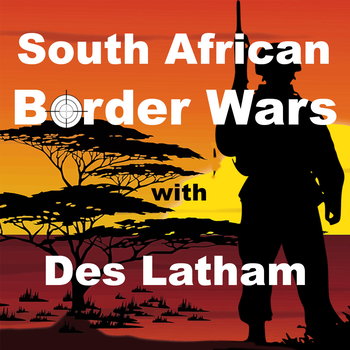
Episode 83 – The most ambitious Op involving SADF special Forces hits Namibe
Loading player...
By January 1986 internal unrest in South Africa that had started in 1984 was in full swing – with the security forces hard pressed to cope. The SA Police were largely responsible for dealing with the ANC and PAC internally, although the SADF was going to get much more involved later.
The unrest would barely calm down before the SADF was involved in a much bigger war in southern Angola, while special ops were increasing against the ANC MK targets in countries other than Angola during this period.
The South African military establishment had drawn clear lines between what they regarded as terror activities and politically motivated unrest that was violent.
This is an important distinction and had a bearing on how they’d conduct some of their external attacks on ANC cadres. Terror was defined by the SADF as actions conducted by infiltrators who committed political murders, lay mines on roads, and blew up substations and other infrastructure.
Unrest was burning down schools and government buildings, barricading streets, large groups of people on streets who’d attack others, sometimes including the terrifying necklace killing technique which was a car tire filled with fuel thrown around the neck of a victim.
IN Ovamboland, SWAPOs armed wing PLAN stepped up attacks on administrative officials. IN March 1986 South African President PW Botha proposed in parliament that Resolution 435 be implemented by August, but wanted the Cubans to withdraw from Angola first. In fact, the opposite was going on as we know.
Back in Angola, Russian general Konstantin Kurochkin who was a veteran of Moscow’s failed push into Afghanistan had instituted his own set of changes. We heard about some last episode, the improved Russian weapon systems, new aircraft, artillery, anti-aircraft and missile systems.
As these built up, the SADF began to focus its attention on FAPLAs logistics and weak points. One of these was the port of Namibe in southern Angola. It lay almost directly due west of the Mavinga and Cuito Cuanavale towns.
So the Recces were ordered to Namibe and Lobito to try and find out what kind of equipment was being collected, and to report back on any possible targets. After a thorough debriefing, it was decided that an attack on Namibe was feasible. There were vessels in the harbour that could be mined, this would kill two birds with one stone. If the Recces could sink a number of these ships, then the quayside would be virtually unusable. They’d also go after the fuel depot.
Eventually, in May 1986, the SADF gave the warning order for Operation Drosdy planning to go ahead. Pretoria had given up on the latest round of negotiations.
The unrest would barely calm down before the SADF was involved in a much bigger war in southern Angola, while special ops were increasing against the ANC MK targets in countries other than Angola during this period.
The South African military establishment had drawn clear lines between what they regarded as terror activities and politically motivated unrest that was violent.
This is an important distinction and had a bearing on how they’d conduct some of their external attacks on ANC cadres. Terror was defined by the SADF as actions conducted by infiltrators who committed political murders, lay mines on roads, and blew up substations and other infrastructure.
Unrest was burning down schools and government buildings, barricading streets, large groups of people on streets who’d attack others, sometimes including the terrifying necklace killing technique which was a car tire filled with fuel thrown around the neck of a victim.
IN Ovamboland, SWAPOs armed wing PLAN stepped up attacks on administrative officials. IN March 1986 South African President PW Botha proposed in parliament that Resolution 435 be implemented by August, but wanted the Cubans to withdraw from Angola first. In fact, the opposite was going on as we know.
Back in Angola, Russian general Konstantin Kurochkin who was a veteran of Moscow’s failed push into Afghanistan had instituted his own set of changes. We heard about some last episode, the improved Russian weapon systems, new aircraft, artillery, anti-aircraft and missile systems.
As these built up, the SADF began to focus its attention on FAPLAs logistics and weak points. One of these was the port of Namibe in southern Angola. It lay almost directly due west of the Mavinga and Cuito Cuanavale towns.
So the Recces were ordered to Namibe and Lobito to try and find out what kind of equipment was being collected, and to report back on any possible targets. After a thorough debriefing, it was decided that an attack on Namibe was feasible. There were vessels in the harbour that could be mined, this would kill two birds with one stone. If the Recces could sink a number of these ships, then the quayside would be virtually unusable. They’d also go after the fuel depot.
Eventually, in May 1986, the SADF gave the warning order for Operation Drosdy planning to go ahead. Pretoria had given up on the latest round of negotiations.

